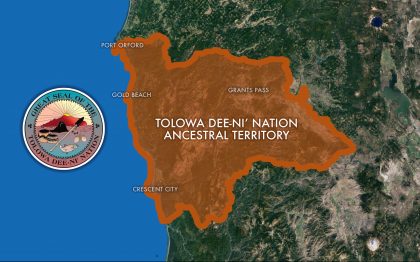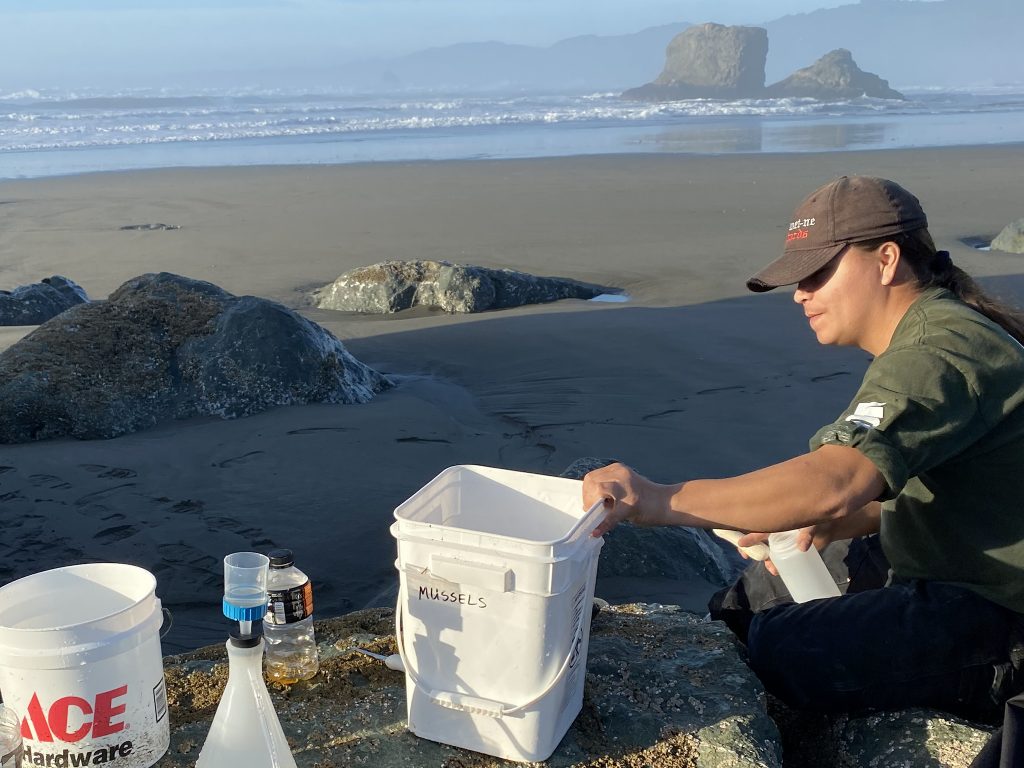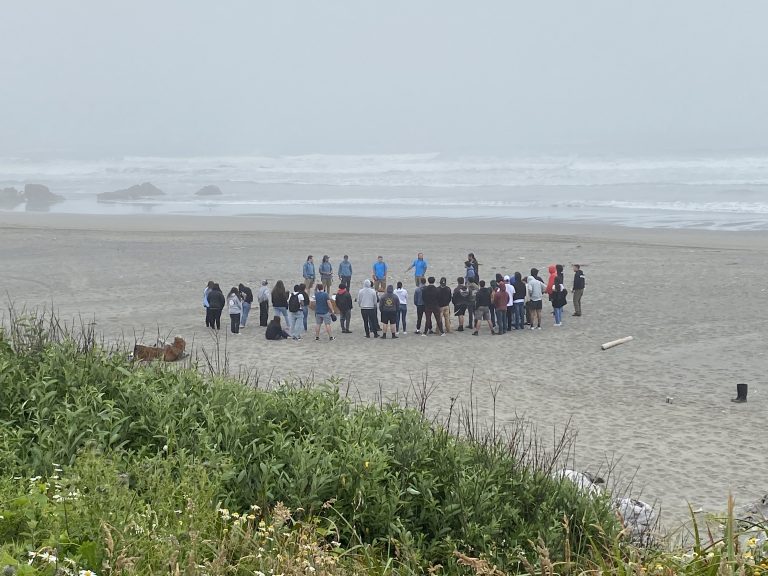
The Living Cartography: Unveiling the Tolowa Dee-ni’ Nation’s Traditional Lands Map
A map is never just a map. For the Tolowa Dee-ni’ Nation, a map of their traditional lands is a pulsating document of identity, a testament to enduring sovereignty, and a powerful echo of history that resonates across millennia. Far from a static set of lines and labels, this map is a living narrative, inviting us to look beyond mere geography and delve into the profound cultural, spiritual, and historical tapestry woven into every river, redwood, and coastal bluff. For the conscious traveler and the curious student of history, understanding this map is not just about knowing where a people once lived, but recognizing where they thrive today.
The Map: A Declaration of Existence and Connection
The traditional lands map of the Tolowa Dee-ni’ Nation encompasses a breathtaking stretch of what is now known as the northern California coast and a sliver of southern Oregon. Its heartland pulses around the mouth of the Smith River, extending along the Pacific coastline, inland into the majestic redwood forests, and across the fertile river valleys. This is not a map of a modern reservation, but a meticulously documented representation of the ancestral territory—a homeland defined by generations of occupation, stewardship, and spiritual connection.

What distinguishes this map is its inherent challenge to the colonial narrative. Where settler maps often depict empty spaces or simply claim lands, the Tolowa Dee-ni’ map is saturated with meaning. It meticulously outlines areas for fishing, hunting, gathering, ceremonial sites, village locations, trade routes, and burial grounds. Each feature is a named place, imbued with stories, songs, and protocols passed down through oral tradition. It’s a declaration, a prayer, a history lesson, and a land management plan all in one.
Pre-Contact Flourishing: A World Defined by Land and Sea
Before the arrival of European and American settlers, the Tolowa Dee-ni’ people thrived in a rich and abundant landscape, expertly managing and living in harmony with their environment. Their traditional lands provided everything necessary for a sophisticated and self-sufficient society.
Resource Abundance: The Pacific Ocean was a boundless larder, offering salmon, steelhead, mussels, clams, and various marine mammals. The Smith River, a pristine waterway, teemed with fish, particularly during salmon runs, which were central to Tolowa sustenance and ceremonies. Inland, the vast redwood and Douglas fir forests provided deer, elk, bear, and a wealth of plant resources like acorns, berries, and medicinal herbs. The Tolowa practiced sophisticated resource management, including controlled burns, to ensure the long-term health and productivity of their lands.

Societal Structure and Culture: Tolowa society was organized into autonomous villages, each with its own leadership, but united by shared language (a Northern Athabaskan dialect), cultural practices, and kinship ties. Their plank houses, often built from redwood, were marvels of engineering and community. The people were renowned for their intricate basketry, skilled woodworking, and sophisticated oral traditions that preserved their history, laws, and spiritual beliefs.
Ceremonies, such as the Nee-dash (New Year’s) and the White Deerskin Dance, were deeply intertwined with the land and its cycles, reinforcing communal bonds and spiritual connections to the ancestral territory. These were not merely celebrations, but vital acts of renewal, healing, and reaffirmation of their place in the world. Trade networks extended far beyond their immediate territory, connecting them with neighboring tribes and facilitating the exchange of goods and knowledge. The map, therefore, illustrates not just physical space, but a vibrant and interconnected cultural landscape where every hill, stream, and grove held specific significance and utility.
The Onslaught of Contact: A History of Dispossession and Resilience
The centuries following European contact brought a cataclysmic shift to the Tolowa Dee-ni’ world. While early Spanish and Russian explorers made sporadic contact, the true devastation began in the mid-19th century with the American Gold Rush and the subsequent waves of settler colonialism.

Violence and Disease: The influx of miners and settlers into northern California brought unprecedented violence, disease, and environmental destruction. The Tolowa, like many California Native peoples, suffered horrific massacres, forced displacement, and the introduction of diseases against which they had no immunity. Their population plummeted dramatically.
Broken Treaties and Land Theft: The United States government, in its rush to secure land for settlers, negotiated treaties with various California tribes in the early 1850s, promising reservations and protection in exchange for vast tracts of land. These treaties, however, were never ratified by Congress, rendering them null and void in the eyes of the government, though not in the memory or understanding of the Tolowa. This act of deliberate bad faith facilitated the legal theft of ancestral lands, leaving the Tolowa largely dispossessed and vulnerable.
Forced Assimilation: Surviving Tolowa people were often forcibly removed from their traditional villages and confined to small, often temporary, reservations or rancherias. Government policies aimed at "civilizing" Native Americans led to the establishment of boarding schools, where Tolowa children were stripped of their language, culture, and identity. Traditional ceremonies were outlawed, and the very connection to their ancestral lands, which had sustained them for millennia, was systematically attacked.
Despite these immense pressures and acts of genocide, the Tolowa Dee-ni’ people never vanished. Their resilience, cultural strength, and unwavering connection to their ancestral lands ensured their survival. The map became a silent, yet powerful, testament to what was lost, what was remembered, and what would eventually be reclaimed.
Resilience and Revitalization: Reclaiming Identity and Land
The 20th century saw the Tolowa Dee-ni’ Nation, like many other Indigenous peoples, embark on a long and arduous journey of cultural revitalization and the assertion of their sovereign rights.

Federal Recognition and Restoration: For a period, the Tolowa people, along with many other tribes, faced federal termination policies, which sought to dissolve their tribal status. However, through persistent advocacy and legal battles, the Tolowa Dee-ni’ Nation achieved federal recognition in 1983, allowing them to re-establish a government-to-government relationship with the United States. This was a crucial step in regaining control over their lands, resources, and cultural destiny.
Cultural Resurgence: Today, the Tolowa Dee-ni’ Nation is a vibrant and self-governing nation dedicated to preserving and promoting its rich cultural heritage. Language immersion programs are actively revitalizing the Tolowa Dee-ni’ language (Xus-we-t’a), ensuring its transmission to younger generations. Traditional ceremonies, such as the Nee-dash, are once again openly celebrated, reconnecting the community with their spiritual practices and ancestral ways. Traditional arts like basket weaving and regalia making are thriving, serving as tangible links to their past and powerful expressions of their ongoing identity.
Sovereignty and Stewardship: The Tolowa Dee-ni’ Nation actively exercises its inherent sovereignty through self-governance, economic development, and robust educational initiatives. They are leaders in environmental stewardship, working to protect and restore the natural resources within their traditional territory, including salmon habitats in the Smith River and the health of the redwood forests. This commitment is deeply rooted in their ancestral responsibility to care for the land that has always cared for them. The traditional lands map, in this context, is not merely a historical artifact but a blueprint for future generations, guiding their efforts in cultural preservation, resource management, and the assertion of their rights.
Understanding the Map Today: For Travelers and Educators
For those exploring the stunning landscapes of northern California and southern Oregon, the Tolowa Dee-ni’ Nation’s traditional lands map offers an invaluable lens through which to experience the region. It transforms a beautiful vista into a place brimming with layered history, living culture, and enduring identity.
Respectful Engagement: Understanding this map means recognizing that the lands you traverse are not just "public lands" or "wilderness areas," but ancestral homelands with deep spiritual and cultural significance. It encourages respectful engagement: learning about the Tolowa Dee-ni’ Nation, acknowledging their continuous presence, and appreciating their contributions to the region’s history and future.
Beyond the Postcard: For the traveler, this understanding moves beyond superficial tourism. It invites a deeper appreciation for the interconnectedness of people and place, encouraging visits to the Tolowa Dee-ni’ Nation’s cultural center, supporting tribal businesses, and learning directly from their perspectives. For educators, the map serves as a powerful teaching tool, illustrating the complexities of Indigenous history, the impacts of colonialism, and the inspiring story of resilience and self-determination. It provides a concrete example of how Indigenous peoples continue to assert their rights and revitalize their cultures in the face of historical adversity.
The Tolowa Dee-ni’ Nation’s traditional lands map is more than just a geographic representation; it is a profound statement of enduring presence. It speaks of a people who have faced immense challenges yet remain deeply connected to their ancestral territory. It is a guide not only to the physical landscape but to the spiritual, cultural, and historical heart of a resilient nation, inviting all who encounter it to listen, learn, and respect the living legacy of the Tolowa Dee-ni’.


